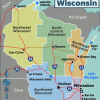For centuries, women in the United States have faced many challenges as they seek to gain access to homeownership. Women of various races and backgrounds were often discriminated against and denied access to homeownership for multiple reasons. Despite this, brave and determined women have fought hard for their right to own homes and have made progress over time.
In this article, we will explore the history of woman’s rights regarding homeownership in the United States, review some vital legal milestones that marked the pathway towards financial independence, discuss trends in female-owned households throughout US history, and draw attention to initiatives encouraging more female homebuyers today.
Overview of the first laws that enabled women to own property in the United States
In colonial America, property ownership was reserved primarily for white male landowners. However, a few women had access to property ownership, typically through inheritance from their fathers or husbands. Women’s rights to property ownership were further codified in the early 19th century when states began to pass laws granting women the right to own and manage property in their name.
Since the late 1700s, enslaved people in the United States were not legally allowed to own property. This was also true for women, which endured until the mid-1800s when laws began to be passed which granted the right of property ownership to African American slaves and free women of all backgrounds. In 1845, Mississippi became the first state to recognize women’s right to own property separate from their husband’s rights. This marked an evolution in women’s homeownership and increased gender equality.
Despite these early efforts, women faced significant barriers to property owners throughout the 19th and early 20th centuries. One significant challenge was the legal doctrine of coverture, which held that a woman’s legal rights and obligations were subsumed by those of her husband upon marriage. This meant that any property a woman owned before marriage automatically became her husband’s property, and any property she acquired during the marriage became joint property.
Historical timeline of women’s struggle for homeownership rights
The struggle for female homeownership spanned centuries, beginning with suffragettes of the late 1800s fighting for women’s right to vote and own property. In 1924, over 10 million single women were given the right to buy homes without a male co-signer—a monumental act that opened unprecedented equity.
By the end of the 19th century, women in most states could own property and homes outright. The passage of the Married Women’s Property Acts in several states gave married women certain rights over their earnings and property, such as real estate. Still, it wasn’t until after the Civil War that widowed black and Latina women could share these rights.
Moreover, subsequent decades ushered in significant progress as laws such as Title VII and the Equal Credit Opportunity Act provided equal opportunities for women to access mortgages, paving their way to financial stability and solvency. In 2018, according to the National Association of Realtors (NAR), single women purchased homes at five times the rate of their single male counterparts. Ultimately, the timeline evidences an extraordinary history of progress regarding female homeownership rights. In the current landscape, many households are owned by married couples or single people, marking a significant shift in historical attitudes toward gender and ownership.
Behind the numbers: Statistical data on rates of female homeownership
Over the course of history, female homeownership has been a socially and economically important issue in the United States, with single women at particular risk of exclusion. In the 20th century, women continued to expand their rights regarding homeownership. The passage of the Equal Credit Opportunity Act (ECOA) in 1974 enabled women to get credit and mortgages without requiring a male cosigner. This was a significant step forward for women who wanted to be independent homeowners. Furthermore, mortgage lenders began recognizing women as primary borrowers instead of considering them solely as spouses or dependents of male borrowers.
While significant increases have occurred in the number of single and married female homeowners since 1981, women continue to face barriers to homeownership, particularly women of color and those in lower-income brackets. According to a National Association of Realtors report, women of color are less likely to own homes than white women or men of any race. Additionally, women who are divorced or single parents often face significant challenges in accessing affordable housing.
According to recent reports from the Urban Institute, single women make up only 17% of all single-family homeowners compared to single men, who constitute 34%. In comparison, married couples account for most of the remaining 49%. In addition, equity inclusion is seen as an issue among specific demographics: Black and Latina single women had 7.4% and 10.5% homeownership rates, respectively, in 2018, lower than their white counterparts (27%), Asian American single women (21%), or even single black men (17%). With this data in mind, more proactive inclusive solutions are needed for these groups to have their fair share in securing homeownership across the U.S.
Impact of different factors on women’s ability to purchase homes
The ability of women to purchase homes has been intimately tied to pay inequality, financial equity, and generational wealth security. In the pre-civil rights era in the United States, discrimination limited economic opportunities for African Americans; this, in turn, impacted their ability to build capital by maintaining ownership of a house. For generations, being able to purchase a home has played an essential part in establishing financial stability and leaving a legacy for children and grandchildren.
Meanwhile, pay equality didn’t become legally mandated until 1963 with the signing of the Equal Pay Act. However, pay inequalities continue to impact accessibility for low-income women looking to enter homeownership. Notably, in 2017, U.S Census Bureau data indicated that single fathers were nearly twice as likely as single mothers to own properties — illustrating how unequal treatment of women can leave them economically disadvantaged across multiple lifetimes.
Today, women are more likely than ever before to become homeowners. According to the National Association of Realtors, women made up 58 percent of home buyers in 2017, and women’s homeownership rate is the highest it has ever been at 61 percent. While women have faced significant obstacles in their pursuit of homeownership, they have also achieved considerable progress over the years.In fact, according to recent data from the US Census Bureau, single women are now outpacing single men in homeownership by the millions.
Examining the cultural shift in perceptions toward female homeownership
Female homeownership in the United States has experienced an interesting shift over time. Before the mid-1900s, the idea of a woman owning and managing her property was largely unheard of due to diversity and inclusion issues, gender roles, and racial biases prevalent across many aspects of society during this period. Since then, we have seen distinct progress toward equality for women regarding their ability to become independent homeowners.
Several factors have influenced women’s homeownership, including economic, social, and legal changes. Women’s increased workforce participation is one of the most significant factors. As more women have entered the workforce and achieved financial independence, they have taken advantage of the benefits of homeownership, including building wealth and stability.
Increasing educational opportunities for all members of society and advances in racial justice have made it easier for women to secure financial access to housing loans and affordability. This cultural revolution has empowered many generations of women across the United States who can now create wealth by investing in their future by owning property. This is a significant achievement and should be considered real progress in diversity inclusion education, racial bias reduction, and the pursuit of lasting independence and true equality within our society.
Modern legislation is improving access to housing for all genders
As more modern legislation seeks to equalize opportunities for equal access to housing for all genders, we are seeing a more significant and much-needed emphasis on mortgage gender equity. No longer can discrimination and inequality be preached in the rental and homeownership markets, as women become more empowered in their rights to equal opportunity mortgage programs, fair housing practices, credit requirements, and other factors. Through efforts such as the Equal Credit Opportunity Act of 1974, women are now protected from discrimination when applying for or obtaining credit, meaning they have equal access to mortgages when evaluating overall financial stability and creditworthiness. While still strides away from total equality in all areas -especially considering unequal wages- we can finally start seeing change on the horizon as history is written today, through measures such as ECOA, toward an equal future for home ownership by all genders.
Female homeownership in the United States has had a long and tumultuous history of triumphs and challenges. Even in recent years, statistics have shown that women are still drastically underrepresented in the homeownership population compared to men, primarily due to systemic inequalities determined by economic inequality, sexism, and structural barriers. However, there is hope for the future with legislation such as The Fair Housing Act that aims to create more equitable access to housing for all genders.
Please let us know what your thoughts are. Are there any initiatives or organizations that you would recommend being highlighted? Leave a comment below or email [email protected] and share your knowledge!















I’d like the facts on the pay inequality as I am constantly trying to bring this to the forefront,